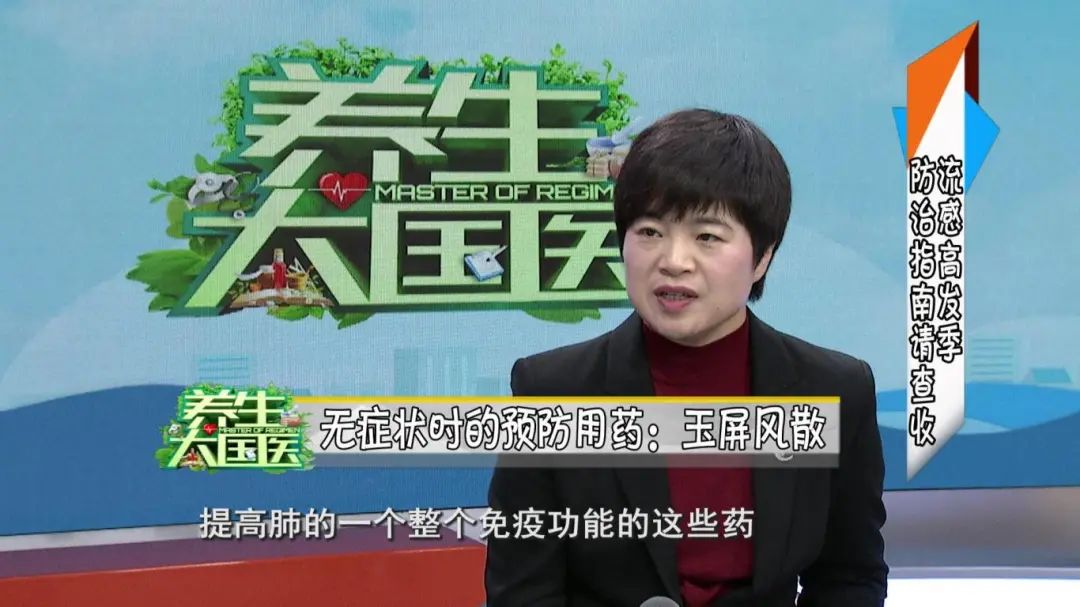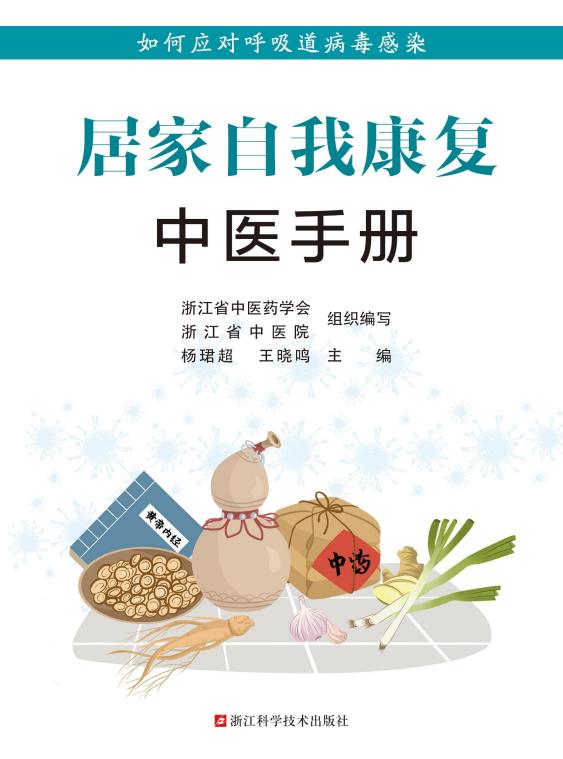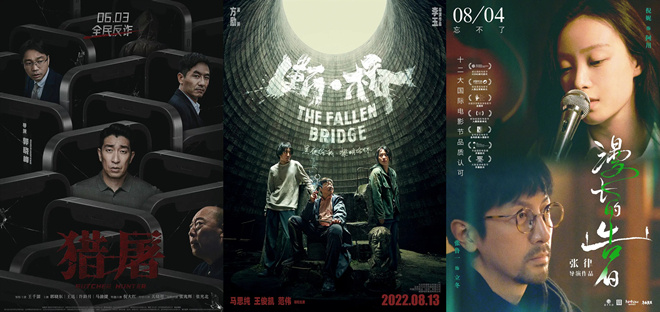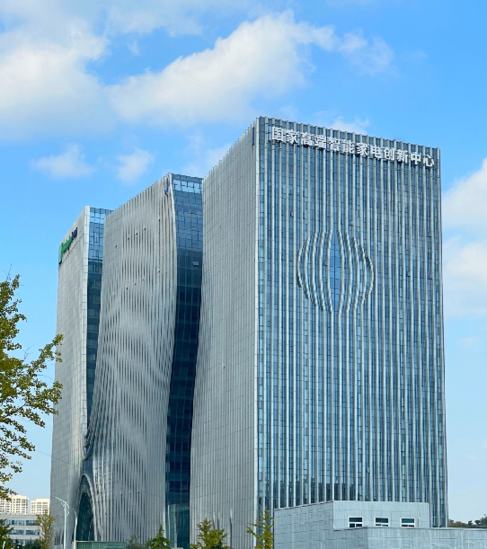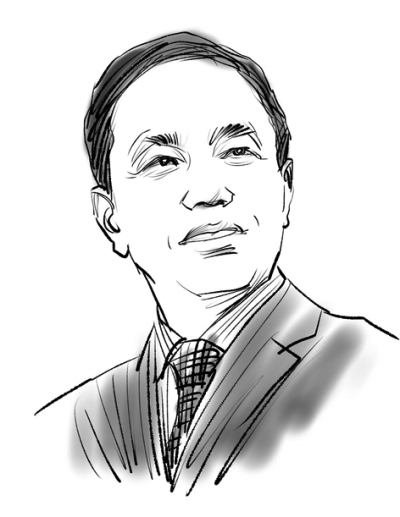
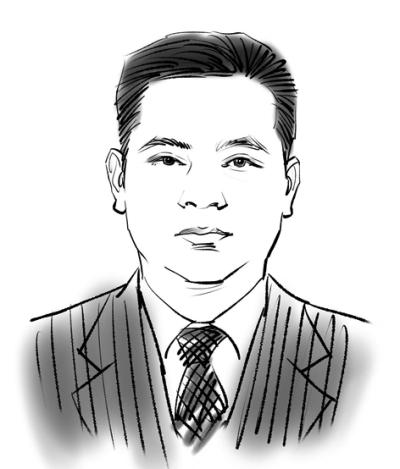
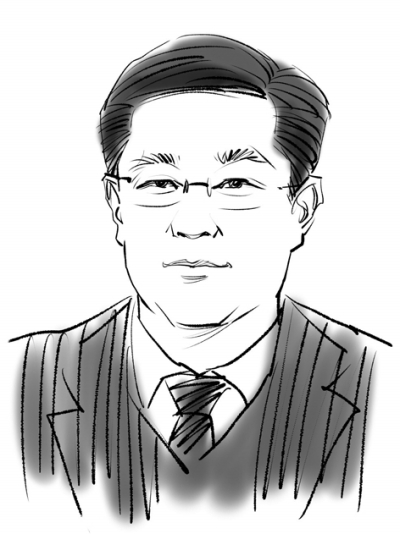
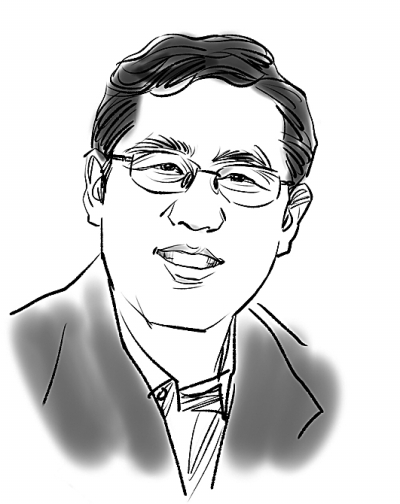
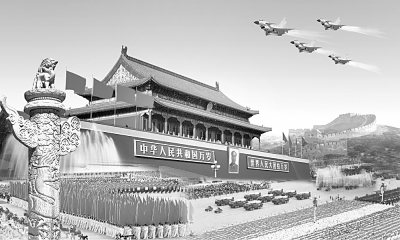
[New Ideas and Practice of Governing the Country, Studying and Implementing the Spirit of the "1 July" Important Speech by General Secretary of the Supreme Leader, Roundtable Dialogue]
host
Our reporter Luo Xu Wang Haokui
Guest of this issue
Zhou Wenzhang, former vice president of National School of Administration
Xiong Yun, Vice President of China Pudong Cadre College
Hong Xianghua, Professor of Scientific Research Department of Central Party School
Xin Xiangyang, a researcher at the Marxist Institute of China Academy of Social Sciences.
editorial comment/note
In an important speech at the celebration of the 95th anniversary of the founding of the Communist Party of China (CPC), General Secretary of the Supreme Leader pointed out: "Whether Socialism with Chinese characteristics is good or not depends on the facts and the judgment of the people of China, not on the subjective assumptions of those who wear colored glasses. The people of the Communist Party of China (CPC) and China are fully confident to provide a Chinese solution for human exploration of a better social system. "
Choosing the best possible social system has always been the pursuit of civilized society. From Plato’s utopia to the Paris Commune, the early practice of communism, and then to the first socialist country, the Soviet Union, the journey of human beings asking for ways is full of suffering and glory. The final establishment of Socialism with Chinese characteristics system has condensed the sacrifice and devotion of the Communist Party of China (CPC) people, and it is the latest achievement of contemporary China based on national conditions, mutual learning of civilizations and self-improvement. Since the 18th National Congress of the Communist Party of China, more and more countries have been paying attention to and praising China’s outstanding explorations such as the Chinese dream, the 13th Five-Year Plan, the Belt and Road strategy and the concept of a community of human destiny. It is reasonable to believe that the longer the time span, the more tests we have experienced, and the more clearly we can see that the Socialism with Chinese characteristics system is not only an effective and beneficial social system in China, but also will deeply attract many countries in the world, especially developing countries, and become a road or institutional choice for them to move towards national prosperity and people’s happiness.
China’s 13th Five-Year Plan brings new opportunities to the world.
Moderator:General Secretary of the Supreme Leader pointed out in his important speech on July 1st that "making new and greater contributions to mankind is a solemn commitment made by the people of the Communist Party of China (CPC) and China long ago" and "at this stage, the main task of building Socialism with Chinese characteristics is to achieve the goal of the first century-long struggle and build a well-off society in an all-round way by the centenary of the Communist Party of China (CPC)’s founding in 2020". The 13th Five-Year Plan, as the final plan of building a well-off society in an all-round way, proposes that the average annual economic growth of China will remain above 6.5%. How will China’s 13th Five-Year Plan boost the world’s expectations and confidence in China’s economy under the background that the world’s economic development has entered a transitional period?
Zhou Wenzhang:General Secretary of the Supreme Leader’s "1 July" important speech is a declaration for the future. the Communist Party of China (CPC) people’s mission is on their shoulders, and Do not forget your initiative mind blew the horn of sprinting towards the goal of building a well-off society in an all-round way. In the decisive stage of building a well-off society in an all-round way, our party is leading the people to do a good job in the development of the "Thirteenth Five-Year Plan" and steering the China ship to break the waves on the journey of rejuvenation.
In view of the more complicated development environment at home and abroad, the Outline of the Thirteenth Five-Year Plan puts forward the development concept of innovation, coordination, green, openness and sharing, defines the main objectives and tasks of economic and social development in the next five years, and puts forward a series of major policies, major projects and major projects to support development, which points out the direction and path for China’s economic and social development in the next few years.
It is obvious to all that China not only has great development potential, but also has the macro-economic control ability and policy application means to release its development potential. The successful practice of China’s reform and opening up in the past 30 years has proved this point from a historical perspective; In the eight years since China responded to the global financial crisis in 2008, the economy has been able to maintain an average annual growth rate of 8.4%, ranking first in the contribution rate to world economic growth for many years in a row, which has also been proved from a practical point of view; The strategic layout and implementation measures of China’s 13th Five-Year Plan will surely prove this point from future practice.
In the current global economic turmoil, China’s 13th Five-Year Plan has undoubtedly provided a "stabilizer" and a "ballast stone" for the development of the world economy, which will not only promote the further development of Asia-Europe economy, but also lead the world economy to a new round of development.
Yun Xiong:General Secretary of the Supreme Leader’s "1 July" important speech once again issued a mobilization order to the whole party to build a well-off society in an all-round way and realize the goal of "two hundred years".
In the first half of 2016, with the world economic growth continuing to slow down, China’s economy showed obvious signs of "stabilization and recovery". The GDP growth rate was expected to be around 6.9%, and the economic operation remained within a reasonable range. The average number of new market players is 40,000 per day, and the growth rate from January to May is higher than that in the previous two years. Employment remained stable. From January to May, the number of new jobs in cities and towns reached 5.77 million, fulfilling 58% of the annual target. These hard-won achievements have benefited from the new progress made in reform, innovation and adjustment and transformation.
In the context of domestic and international economic transformation and sluggish world market demand, a good start of the 13th Five-Year Plan will undoubtedly boost the confidence of China and the world. With the gradual promotion and implementation of the objectives and tasks in the 13th Five-Year Plan, more and more China enterprises and capitals will "go global", and China capital, China technology and China model will surely become new kinetic energy to lead global development. In the long run, China’s 13th Five-Year Plan will surely give the world more opportunities to share the dividends of China’s reform and development, and inject Chinese strength into the global economic recovery.
Hong Xianghua:General Secretary of the Supreme Leader pointed out in his important speech on 1 July: "Development is the top priority of the party in governing and rejuvenating the country and the key to solving all problems in China." On July 8, when he presided over the symposium of experts on economic situation, he further pointed out: "From the perspective of economic operation, the characteristics of the new normal of China’s economic development are more obvious. We must strengthen our confidence, strengthen our determination, unswervingly promote structural reforms on the supply side, cultivate new economic structures, and strengthen new development momentum."
This situation shows that our plan is practical and feasible. If this situation continues, the potential of economic growth will be further stimulated and the world’s confidence in China’s economic development will be consolidated more and more.
Xin Xiangyang:General Secretary of the Supreme Leader’s important speech on 1 July emphasized: "Building a well-off society in an all-round way is a solemn commitment made by our party to the people and history, and it is the common expectation of more than 1.3 billion people in China." This means that by 2020, we will build a well-off society in an all-round way, with moderate and high-speed economic growth, generally improved people’s living standards and quality, significantly improved national quality and social civilization, overall improved ecological environment quality, and more mature and stereotyped systems in all aspects.
By then, China’s GDP is expected to reach $17 trillion, with a per capita income exceeding $10,000, and its material base will be stronger. Such a society can not only greatly stimulate the creativity of China people, but also bring opportunities for the development of many countries in the world.
At the same time, during the 13th Five-Year Plan period, many systems in China should be mature and stereotyped. We have improved the scientific fiscal and taxation system that can optimize the allocation of resources, maintain market unity and promote social equity, formed a scientific and effective social governance system that ensures that society is full of vitality, harmony and order, established a fair, efficient and authoritative socialist judicial system, and established a system of ecological civilization that can jointly promote people’s prosperity, national prosperity and beautiful China. These advanced systems with distinctive China characteristics, obvious institutional advantages and strong self-improvement ability will not only promote the stable and healthy development of China, but also bring powerful institutional dividends to the world.
"The Chinese dream is a dream to contribute to the world"
Moderator:In his important speech on 1 July, the Supreme Leader General Secretary stressed: "The Chinese dream of the great rejuvenation of the Chinese nation must be realized and can be realized." Earlier, General Secretary of the Supreme Leader pointed out at the 50th anniversary of the establishment of diplomatic relations between China and France: "The Chinese dream is a dream to contribute to the world", "With the continuous development of China, China has done and will continue to do its best to make its own contribution to world peace and development". Does this mean that the "Chinese Dream" is not only the goal of the Chinese nation, but also provides strong support for the people of the world to seek well-being?
Zhou Wenzhang:General Secretary of the Supreme Leader’s "1 July" important speech further put forward requirements for building the Chinese dream with one heart and strengthened self-confidence. What is the connection between the Chinese dream and the world dream? The supreme leader’s speech in Africa is very representative. He said that more than 1.3 billion people in China are working to realize the Chinese dream of the great rejuvenation of the Chinese nation, and more than 1 billion people in Africa are working to realize the African dream of strengthening themselves through unity, development and revitalization. The Chinese and African people should strengthen unity and cooperation, strengthen mutual support and help, and strive to realize our respective dreams. We will also work with the international community to realize the world dream of lasting peace and common prosperity.
The Chinese dream and the world dream provide opportunities for each other. China is accelerating new industrialization, informationization, urbanization and agricultural modernization, and new growth points will emerge continuously. This will provide international and regional partners with a broader market, more sufficient capital, more abundant products and more valuable opportunities for cooperation.
In January 2016, the Asian Infrastructure Investment Bank officially opened. At the same time, the "One Belt and One Road", the BRICS New Development Bank and other "China programs" have been moving from concept to reality, and the world has seen the opportunities and sincerity from China. It can be predicted that with the further growth of China’s economic scale, it will bring more opportunities for the development of other countries. The Chinese dream is not only a blessing for China, but also a blessing for the world.
Yun Xiong:The important speech of the Supreme Leader General Secretary shows that the "Chinese Dream" is closely linked with the dreams of people all over the world. Where does this connection come from? Some experts estimate that China’s GDP will be about 1.2 times that of the United States after building a well-off society in 2020, and 2.5 times that of the United States after basically realizing modernization around 2030, making it the world’s largest economic power, scientific and technological power and cultural power. The development of China is not only the development of economy, but also the development of civilization. The experience and practice of China’s development will surely attract many countries in the world, especially developing countries, and become a road or institutional choice for them to move towards national prosperity and people’s happiness. People of insight abroad also see this clearly.
British scholar martin jacques pointed out: "The Chinese dream is not limited to China. It concerns China’s role in the transformation of developing countries and the world. More and more people believe that the rise of China will promote the transformation of the world. " It is reasonable to believe that the journey of China people to realize the "Chinese Dream" of the great rejuvenation of the Chinese nation is also a process in which Chinese people have made great contributions to human development and human civilization.
Hong Xianghua:In his important speech on July 1st, General Secretary of the Supreme Leader emphasized that "the Chinese dream must be realized and can be realized". We believe that the road of development advocated by the Chinese dream will eventually "spill over" to establish a good new-type relationship with western developed countries. The Chinese dream has practiced the way of getting along with new-type big power relations. The revival of China does not mean the decline of the West, but a global opportunity. The development of China will also change the traditional relations between major powers, so that international relations will no longer be the "Thucydides Trap" between Sparta and Athens, the pirate colonial logic in the era of great navigation, the conflict between the rise and stagnation in the early stage of industrialization, the hegemony logic between two political groups, but a new type of relations between major powers with win-win cooperation and coexistence.
The Chinese dream has also proposed new solutions to global problems. In today’s world, global problems are increasingly prominent, from disease infection to climate warming and nuclear proliferation, from financial crisis to food crisis, from terrorism to the conflict of civilizations … … We will show the world Chinese’s mind and wisdom: the core of solving global problems lies in common development, and we must advocate the reform and innovation of the world political and economic order, build a more peaceful and just world, and ensure the common development of all ethnic groups.
"One Belt, One Road" is a win-win road of cooperation for the whole world.
Moderator:In his important speech on July 1st, General Secretary of the Supreme Leader emphasized: "China’s opening to the outside world is not about a one-man show, but about welcoming all parties to participate together" and "it is not about building its own back garden, but about building a hundred gardens shared by all countries". He pointed out that China will be "in ‘ Belt and Road ’ Create a more comprehensive, deeper and more diversified opening-up pattern in major international cooperation projects. " What kind of China wisdom and China confidence is the "One Belt, One Road" China program conveying to the world?
Zhou Wenzhang: ""One Belt, One Road" is a major strategic decision made by China to actively cope with the profound changes in the global situation and coordinate the domestic and international situations. It embodies the spirit of peace, exchange, understanding, tolerance, cooperation and win-win, and has been responded by more than 60 countries and international organizations.
The "Belt and Road" runs through Eurasia, connecting the Asia-Pacific economic circle in the east and entering the European economic circle in the west. This strategic concept covers more than 40 countries with a total population of 4.4 billion, accounting for about 63% of the global population; The total economic output exceeds 20 trillion US dollars, accounting for about 29% of the world. It is the most important energy and strategic resource supply base in the world. At present, 900 projects have been launched, with a total value of 890 billion US dollars. With the implementation of the strategy, more projects will be launched and invested. The strategic concept of "One Belt, One Road" meets the common needs of countries along the route and opens a new window of opportunity for complementary advantages and open development of countries along the route.
Yun Xiong: "The Belt and Road Initiative is the inheritance and promotion of the ancient Silk Road, conforms to the requirements of the times and the desire of countries to accelerate development, and has a profound historical origin, humanistic foundation and realistic foundation. Accelerating the construction of the "Belt and Road" will help strengthen exchanges and mutual learning among different civilizations and promote world peace and development.
The Belt and Road Initiative is open to all interested countries. The "Belt and Road" emphasizes an equal and mutually beneficial way of mutual cooperation, joint construction and sharing, and pursues policy communication, facility connectivity, smooth trade, financial intermediation and popular support among countries along the route. China promotes the joint construction of the Belt and Road Initiative, the establishment of the Silk Road Fund, the propose to create Asian Infrastructure Investment Bank, and the construction of the BRICS New Development Bank, with the aim of supporting the common development of all countries, rather than seeking political spheres of influence.
With China becoming the second largest economy in the world, the voice of "China threat theory" in the international community is endless. The construction of "One Belt, One Road" is exactly what China is doing to dispel doubts and doubts to all countries in the world and declare to the world that the rise of China will not be at the expense of other countries’ interests. The people of China are well aware that the development of China benefits from the international community and are willing to contribute to international development with their own development.
Hong Xianghua: "The Belt and Road Initiative will promote the economic growth of many countries along the route. The "Belt and Road Initiative" actively promotes infrastructure interconnection and international corridor construction, jointly builds economic cooperation corridors, strengthens energy and resources cooperation, improves the conversion rate of local processing, jointly builds overseas industrial clusters, and promotes the establishment of local industrial systems. These measures will undoubtedly promote the economic growth of many countries along the route.
"One Belt, One Road" is the road to win-win cooperation. The "Belt and Road" is committed to the interconnection of Asia, Europe, Africa and the nearby oceans. Establishing and strengthening the interconnection partnership among countries along the route and building an all-round, multi-level and compound interconnection network will make the economy along the route more dynamic. The Belt and Road Initiative will bring tangible benefits to the people of all countries along the route and great opportunities for the common development of China and countries along the route.
"One Belt, One Road" is not China’s expansion of Zhang Zhilu. The "Belt and Road" is a "highway" to promote win-win cooperation and sustainable development among countries along the route. Through the construction of the "Belt and Road", we will seek the greatest common denominator of countries along the route, expand the convergence of interests, build a community of destiny, and realize the joint participation, joint construction and common sharing of all countries.
Xin Xiangyang:In his important speech on 1 July, General Secretary of the Supreme Leader stressed: "To persist in Do not forget your initiative mind and continue to advance, we must unswervingly follow the path of peaceful development, unswervingly pursue an open strategy of mutual benefit and win-win, strengthen friendly exchanges with other countries, and work with the people of other countries to continuously push forward the lofty cause of peace and development of mankind." "One Belt, One Road" is the best annotation of this assertion.
We should see that the Belt and Road Initiative is a sunshine avenue that can bring great benefits to all countries along the route, rather than a narrow path that only serves the interests of a few countries. We should also see that the "Belt and Road" is a road of cooperation to discuss, build and share, not a monopoly road. This is a creative way to push the world economic and political structure in a more just and reasonable direction, and an auspicious way to create happiness for people along the route.
The concept of "community of human destiny" leads the new world order
Moderator:In his important speech on July 1st, General Secretary of the Supreme Leader emphasized: "China advocates the community consciousness of human destiny and opposes the cold war mentality and zero-sum game." We have noticed that since the 18th National Congress of the Communist Party of China, the General Secretary of the Supreme Leader has focused on the overall situation of world peace and development, kept pace with the times and constantly enriched the advanced concept of "community of human destiny", occupying the commanding heights of reshaping the world order. How does the concept of "community of human destiny" show China’s commitment to the benign interaction between China and foreign countries?
Zhou Wenzhang:In his important speech on 1 July, the Supreme Leader pointed out: "China will actively participate in the construction of the global governance system, strive to contribute China wisdom to the improvement of global governance, and work with people all over the world to promote the development of the international order and global governance system in a more just and rational direction." Between the lines flashed China’s commitment to the benign interaction between China and foreign countries.
As early as March 2013, when General Secretary of the Supreme Leader gave a speech at Moscow Institute of International Relations, he pointed out: "In this world, the degree of interconnection and interdependence among countries is unprecedented. Humans live in the same global village, in the same time and space where history and reality meet, and they are increasingly becoming a community of destiny with you and me." This is the first time that China has conveyed to the world China’s judgment on the trend of human civilization.
Over the past three years, General Secretary of the Supreme Leader has repeatedly talked about building a community of human destiny and advocating the consciousness and thought of a community of human destiny on many important international and domestic occasions. In his important speech on July 1st, General Secretary of the Supreme Leader emphasized: "China advocates the community consciousness of human destiny and opposes the cold war mentality and zero-sum game." This expresses China’s desire to pursue peaceful development, and embodies the concept of win-win cooperation between China and other countries. This is the wisdom of China, the strength of China and the "China Plan" contributed by the Communist Party of China (CPC) people based on their accurate grasp of the world trend, which embodies our party’s long-term vision, broad mind and historical responsibility for the future, and shows Socialism with Chinese characteristics’s road confidence, theoretical confidence, institutional confidence and cultural confidence.
Xin Xiangyang: "The concept of "Community of Human Destiny" first reflects Chinese’s determination and will to oppose all forms of protectionism, maintain a free, open and non-discriminatory multilateral trading system and maintain and develop an open world economy.
Secondly, it shows that the people of China are fully confident to provide Chinese solutions for the exploration of a better social system. China’s achievements since the reform and opening up have proved the beauty and feasibility of China’s plan.
Thirdly, it reflects Chinese’s ability and conscious action to take corresponding responsibility for world development. In order to practice the "community of human destiny", China has become the country with the largest number of peacekeepers among the five permanent members. Since joining the United Nations peacekeeping operations in 1990, China has sent more than 31,000 peacekeepers, with 19 soldiers killed. In order to realize the "community of human destiny", China will continue to increase its investment in the least developed countries, and strive to increase its aid funds to US$ 12 billion by 2030.
The concept of "the community of human destiny" not only reflects the reality of interdependence between countries in the era of economic globalization, but also reflects China’s understanding of its connection with the world and its common destiny. In practice, the idea of building a "community of human destiny" not only successfully solved the problem of how to balance the interests of third world countries and "big country clubs" in the process of China’s identity transformation from a "developing country" to a "responsible big country", but also successfully solved the problem of China’s diplomatic position balance between adhering to the principle of non-interference in internal affairs and promoting the solution of global problems, which reflected the national and international unity of China’s new diplomatic concept.
Yun Xiong:Walking alone is fast, and many people travel far. In today’s era, mankind is facing all kinds of global challenges. No country can stay out of it and be immune to it. All countries in the world must help each other in the same boat and coordinate their actions in a responsible spirit. The ultimate goal of building a community of human destiny is to enhance the common interests, overall interests and long-term interests of the people of the world.
Actions speak louder than words. China is not only an active advocate of the concept of "community of human destiny", but also a firm practitioner of the concept. From the Tanzania-Zambia Railway many years ago to today’s "Belt and Road", from the fight against Ebola virus in West Africa and earthquake relief in Nepal to the AIIB & HELIP; … This pile is not only the best embodiment of China’s active construction of a "community of human destiny", but also a realistic interpretation of China’s courage to assume the responsibility of a big country. As General Secretary of the Supreme Leader said in his important speech on 1 July, "China has always been a builder of world peace, a contributor to global development and a defender of the international order. It is willing to expand the intersection of interests with other countries, promote the construction of a new type of international relations with win-win cooperation as the core, and promote the formation of a community of human destiny and interests."
Practice is the only criterion for testing truth. The outstanding exploration of China characteristics, such as the 13th Five-Year Plan, the Chinese Dream, the Belt and Road strategy and the community of human destiny, is attracting more and more countries’ attention and praise. Facts have proved our ability and given us confidence to "move on". As General Secretary of the Supreme Leader emphasized in his important speech on 1 July, "the Communist Party of China (CPC) people and China people are fully confident to provide China’s plan for mankind’s exploration of a better social system." We also firmly believe that the "China Program" will be increasingly brilliant in the test of history and reality, illuminating the way forward for human civilization.
Figure sketch: Guo Hongsong
 An e-commerce platform Source: The Paper
An e-commerce platform Source: The Paper  A social platform
A social platform  An e-commerce platform
An e-commerce platform  An e-commerce platform
An e-commerce platform  An e-commerce platform
An e-commerce platform  An e-commerce platform
An e-commerce platform 













